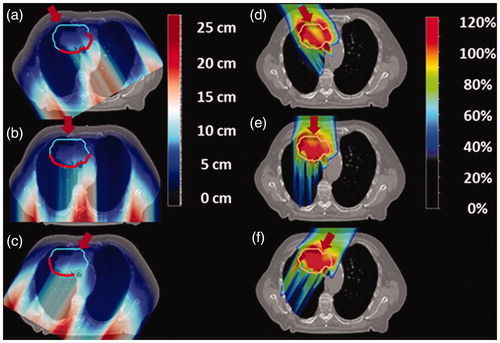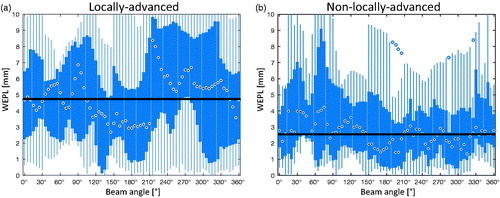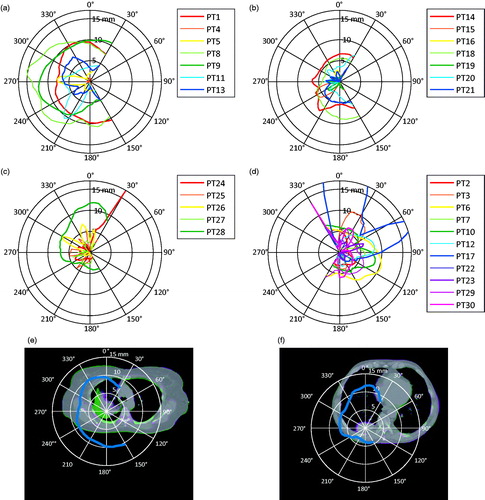Figures & data
Table 1. Patient’s characteristics (n = 30).
Figure 1. The WEPL for beam angles −30°, 0° and 30° (a–c, respectively) in color-wash according to the legends, for the PTV (line). The WEPL at the distal edge of the target (dark part of the target delineation) were recorded and used in the subsequent analysis. The calculated doses for the corresponding gantry angles are shown as color wash for the same beam angles in (d–f) for the CTV (line). The arrows indicate the incident beam directions.

Figure 2. The absolute ΔWEPL as a function of beam angle shown in box plots in (a) for the locally-advanced lung tumor patient cohort (patients 1–15) and in (b) for the non-locally-advanced lung tumor patient cohort (patients 16–30), hence left-and right-sided results are overlaid. Circle with dot: median, box: 25th and 75th quartile, line: range, circles: outliers. The horizontal black line represents the median value over all beam angles. The range of the values was up to 15.2 mm (a) and 41.1 mm (b), respectively, (outside the range of the two plots).

Figure 3. Polar plots of the absolute ΔWEPL as function of beam angle for patients with right sided tumors (a–c) and left-sided tumors (d), respectively. Patient 17 (PT17) has a maximum ΔWEPL of 41.1 mm (outside the range of the plot). As examples of large WEPL, the polar plots for patient 1 and 28 are overlaid to the image registration in (e, f). Polar plots overlaid to image registrations for all patients are shown in Supplementary Figures S1 and S2.

Table 2. Causes for large ΔWEPL (> 10 mm) as seen in Figure 3(e,f) and Supplementary Figures S1 and S2. Theses causes are evaluated from the image registration results in three dimensions between the planning and the end-of-treatment BHCT.
Table 3. The true/false positive/negative cases calculated when ΔV95% was larger than 5% and ΔWEPL larger than 1 mm. The sensitivity is 81% and specificity 18%.
